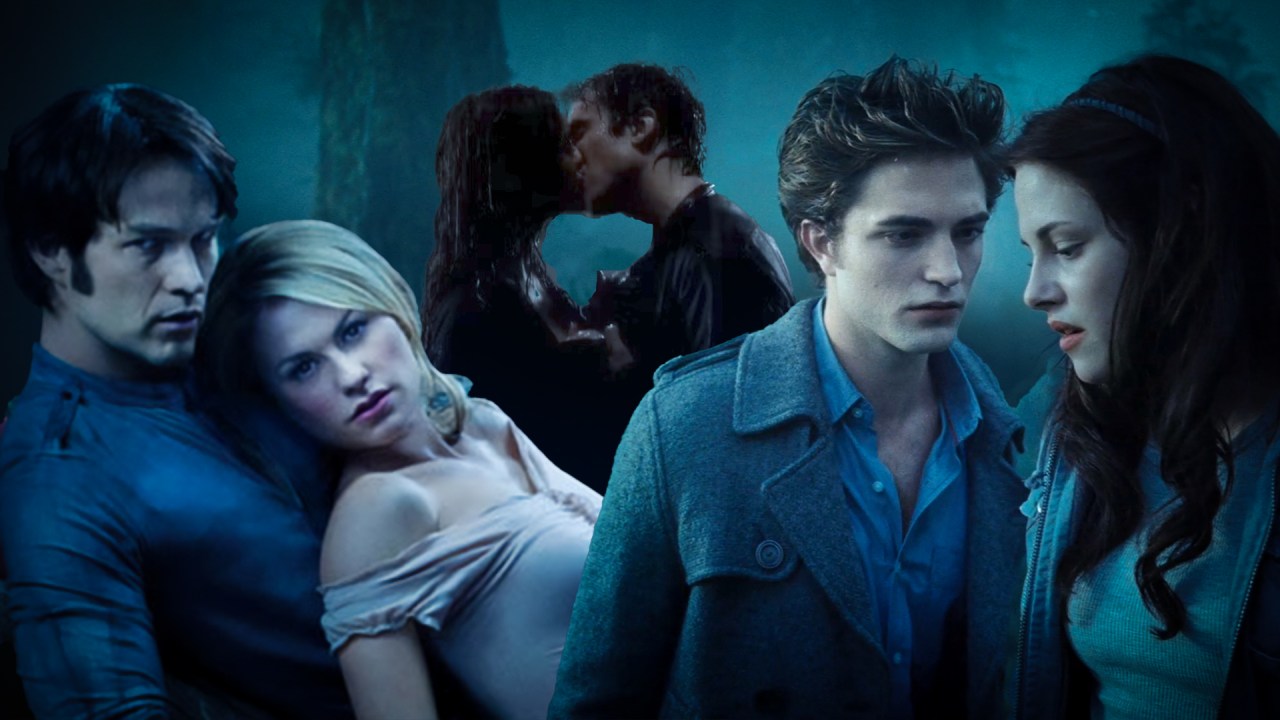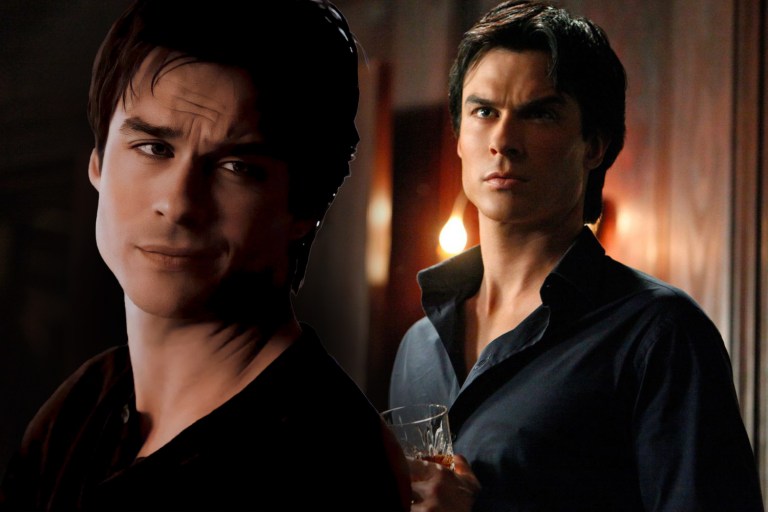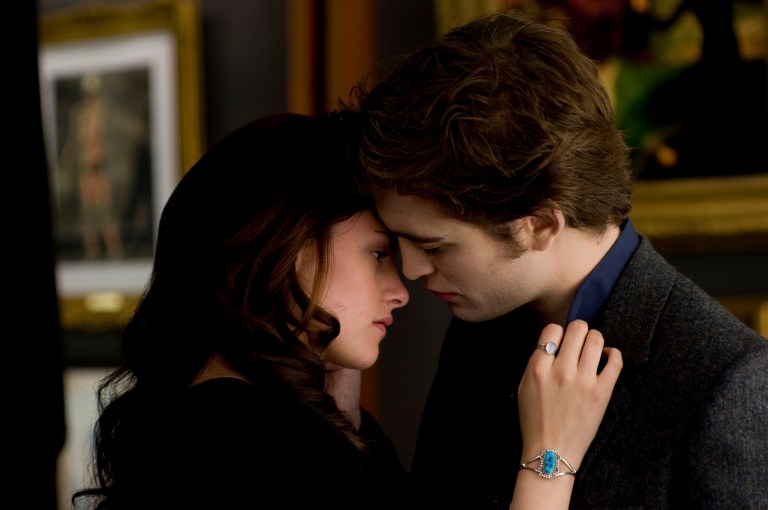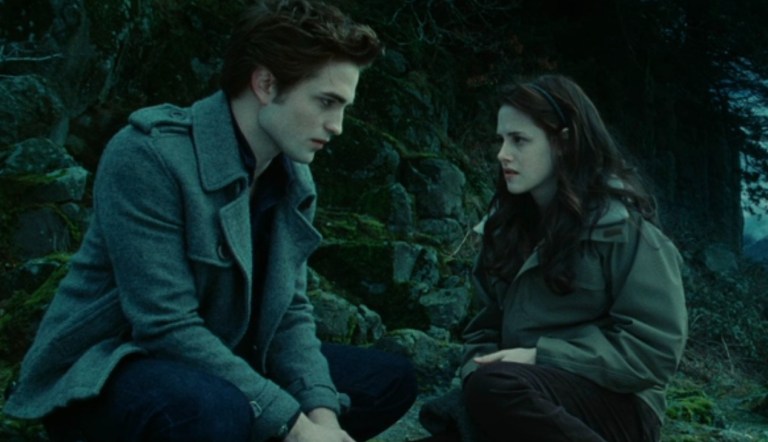
Here’s What ‘Twilight,’ ‘The Vampire Diaries,’ And ‘True Blood’ Have in Common
If you found yourself weirdly obsessed with vampire romance in the late 2000s, don’t worry – you weren’t alone in getting sucked into not one, but three major bloodsucking franchises at the same time.
Vampires took over everything back in the late 2000s. Twilight swept theaters worldwide, while The Vampire Diaries and True Blood had us turning to the TV every week. Each carved out its own unique takes on vampire mythology, but these supernatural sensations also shared some remarkably similar DNA in their storytelling. Looking back it’s fascinating to see how these series tapped into the same cultural zeitgeist while telling their vampiric tales from different angles. If you were Team Edward, Team Stefan, or Team Bill (or their rivals), you might notice these uncanny parallels that tied these bloodthirsty hits together.
Supernatural Love Triangles
Whether in Forks, Mystic Falls, or Bon Temps, apparently no vampire story is complete without two supernatural hotties fighting over one special human. Twilight gave us the Edward-Bella-Jacob dynamic, The Vampire Diaries served up the Stefan-Elena-Damon saga, and True Blood delivered the Bill-Sookie-Eric tension. Each series used this formula to keep viewers agonizing over who would end up with whom. The tension these love triangles created had fans passionately stanning their favorite pairings online and off. These relationship dynamics became so iconic that they’ve influenced countless supernatural romances since, proving that sometimes three really is company.
Anti-Hero Vampires
Gone are the days of vampires as pure villains. All three shows flipped the script by making bloodsuckers the romantic heroes and introduced them to us as troubled souls, rather than mindless monsters. While they struggled with their nature, characters like Edward Cullen, the Salvatore brothers, and Bill Compton tried their best to be “vegetarian” vampires or find ethical ways to feed, making them more relatable – despite their deadly appetites. Their internal battles with the dark side added depth and left fans emotionally invested in their journey toward redemption.
Werewolf Rivals
In each series, just when the vampire-human romance seemed to be sailing smoothly, enter the werewolves to shake things up. From Jacob Black’s pack to Tyler Lockwood’s curse to Alcide Herveaux’s were-drama, these furry rivals added both muscle and complications to the supernatural love stories. The werewolves brought a raw, primal energy that contrasted perfectly with the vampires’ more refined and controlled nature. Their presence also expanded the supernatural worlds of each series, creating rich mythologies that went beyond simple vampire lore.
Keeping Faith Out of the Fight
Interestingly, while traditional vampire lore heavily features religious symbols and holy water, these modern takes largely sidestepped religious elements. Crucifixes and holy water took a backseat to more secular storytelling about love, loyalty, and supernatural politics. This shift allowed the shows to focus on more contemporary themes and moral dilemmas without getting tangled in religious symbolism. By removing these traditional vampire weaknesses, the writers could explore more complex character dynamics and modern ethical questions.
Vampire Weddings
Each franchise featured at least one vampire wedding, complete with unique supernatural twists on traditional ceremonies. From Bella and Edward’s forest fairytale to Caroline and Stefan’s bittersweet union to Jessica and Hoyt’s nuptials, these immortal “I do’s” gave fans the ultimate vampire romance fantasy. The weddings proved that in all three supernatural worlds, the undead also dream of perfect weddings.
Loopholes for Daywalking
Forget about vampires being creatures of the night – Twilight, The Vampire Diaries, and True Blood all found creative ways to let their vampires strut in sunlight. Whether it was the Cullens’ sparkly skin, the Salvatore brothers’ daylight rings, or True Blood’s fairie blood, each made sure their vampires could enjoy both day and night. Luckily for fans, the supernatural loopholes opened up countless storytelling possibilities and added lots of relatable interactions between vampires and humans.
Small Town Settings
Each project picked seemingly quiet small towns as their backdrop. Forks, Mystic Falls, and Bon Temps were all tiny dots on the map that somehow became supernatural hotspots. These sleepy towns harbored dark histories and secret councils trying to manage their supernatural residents. The close-knit community aspect made keeping vampire secrets even harder and the drama more intense.
Powerful Vampire Families/Councils
Each series featured ancient, powerful vampire families or governing bodies pulling strings behind the scenes. The Volturi ruled vampire society in Twilight, the Original family controlled things in The Vampire Diaries, and True Blood had its Authority. These power structures added political intrigue and raised the stakes beyond just romance.
Alternatives to Sucking Blood
All three found ways to make their vampires seem more ethical by giving them alternatives to drinking human blood. The Cullens hunted animals, the Salvatores had blood bags, and True Blood vampires had synthetic blood. This helped make the vampires more sympathetic to the audience.
Human Friends in the Know
Every series had a core group of human characters who knew about the supernatural world and helped keep the secret. From Bella’s dad eventually learning the truth to Caroline and Bonnie supporting Elena to Sookie’s friends at Merlotte’s – these human allies were essential to the plot and provided relatable perspectives on all the supernatural chaos.
Supernatural Powers Beyond Just Vampirism
Each show expanded beyond basic vampire abilities, giving characters additional special powers. Edward could read minds, Bonnie was a witch, and Sookie had her fairy powers – these extra abilities added layers to the storytelling and made each character more unique.










